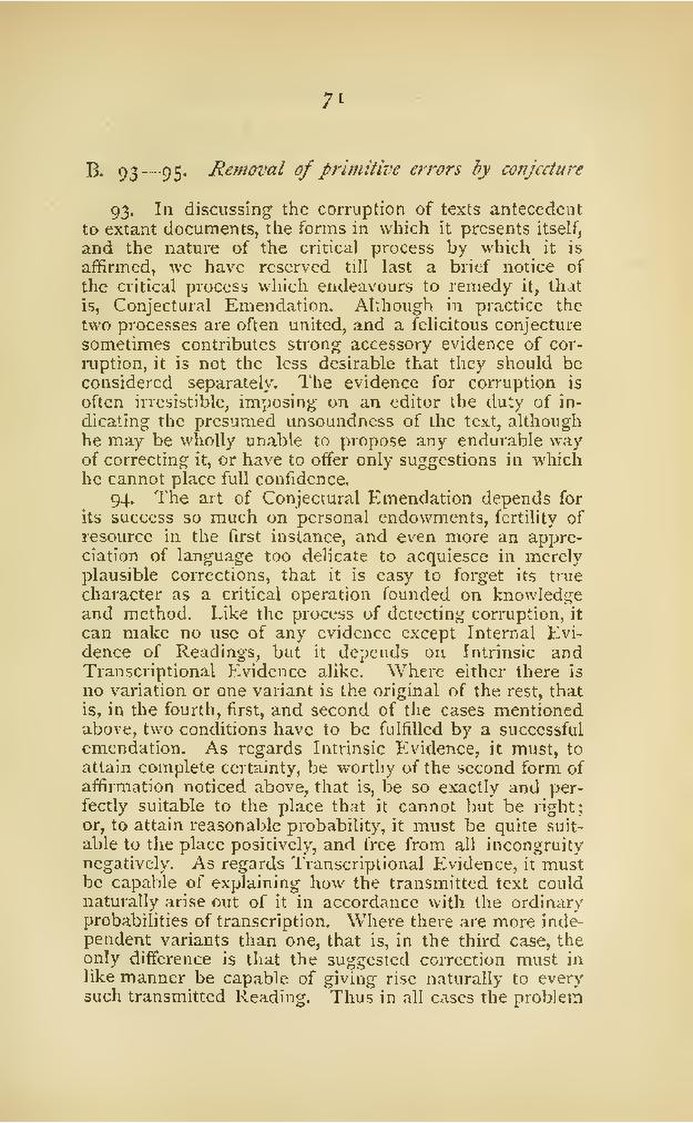B. 93—95. Removal of primitive errors by conjecture
93. In discussing the corruption of texts antecedent to extant documents, the forms in which it presents itself, and the nature of the critical process by which it is affirmed, we have reserved till last a brief notice of the critical process which endeavours to remedy it, that is, Conjectural Emendation. Although in practice the two processes are often united, and a felicitous conjecture sometimes contributes strong accessory evidence of corruption, it is not the less desirable that they should be considered separately. The evidence for corruption is often irresistible, imposing on an editor the duty of indicating the presumed unsoundness of the text, although he may be wholly unable to propose any endurable way of correcting it, or have to offer only suggestions in which he cannot place full confidence.
94. The art of Conjectural Emendation depends for its success so much on personal endowments, fertility of resource in the first instance, and even more an appreciation of language too delicate to acquiesce in merely plausible corrections, that it is easy to forget its true character as a critical operation founded on knowledge and method. Like the process of detecting corruption, it can make no use of any evidence except Internal Evidence of Readings, but it depends on Intrinsic and Transcriptional Evidence alike. Where either there is no variation or one variant is the original of the rest, that is, in the fourth, first, and second of the cases mentioned above, two conditions have to be fulfilled by a successful emendation. As regards Intrinsic Evidence, it must, to attain complete certainty, be worthy of the second form of affirmation noticed above, that is, be so exactly and perfectly suitable to the place that it cannot but be right; or, to attain reasonable probability, it must be quite suitable to the place positively, and free from all incongruity negatively. As regards Transcriptional Evidence, it must be capable of explaining how the transmitted text could naturally arise out of it in accordance with the ordinary probabilities of transcription. Where there are more independent variants than one, that is, in the third case, the only difference is that the suggested correction must in like manner be capable of giving rise naturally to every such transmitted Reading. Thus in all cases the problem